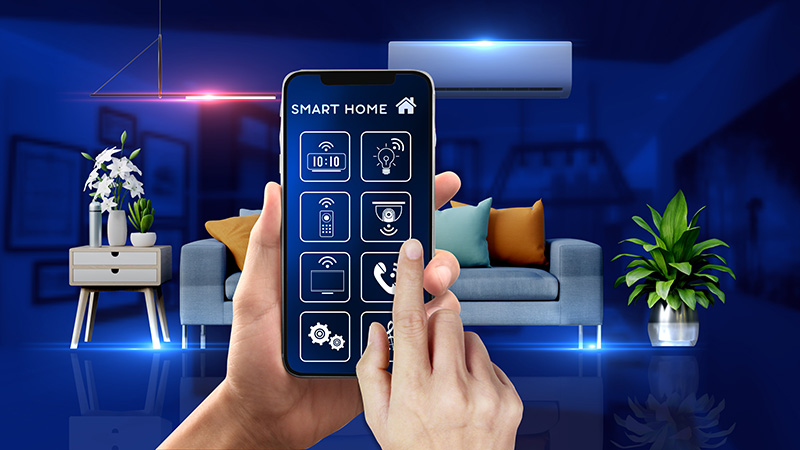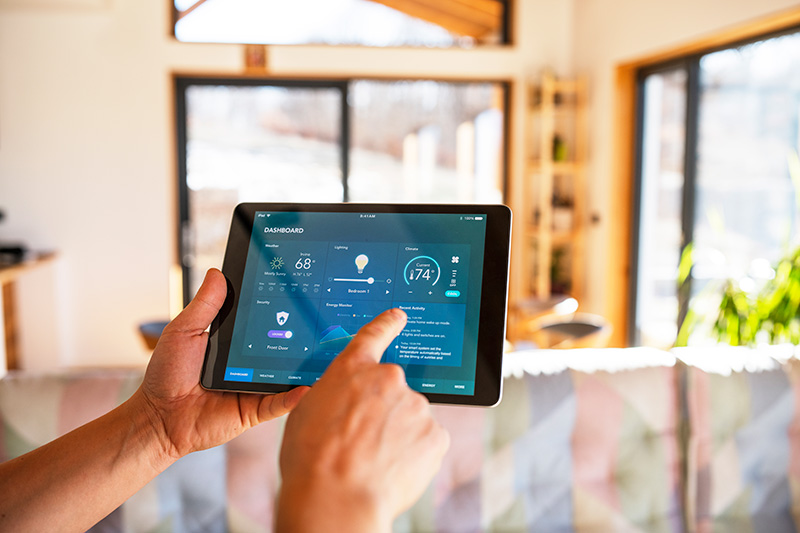Brian Read from YouTube’s Automate Your Life discusses smart home automation and sustainable living.

How important are smart home products and automation when trying to save time?
Smart home products can indeed be a double-edged sword. If you make the right choices and build a cohesive, well-functioning smart home, you will save hours daily! However, making the wrong choices will cost you hours (and money) to install, set up, and eventually replace a faulty product.
The best example of this for me is a smart vacuum. If you buy a $200 robot vacuum, you’re likely to spend time just chasing it around your home because it’ll get stuck. It will also probably break quickly and won’t clean your floors well. However, if you buy the right robot vacuum, it’ll switch between vacuum and mopping modes, successfully avoid everything in your home, and save you an hour every week (at least). The amazing thing? You don’t have to spend $1000 to get that, although it helps.

What are some devices that are a must-have for sustainable living and why?
Most smart home products can be used sustainably. For example, smart plugs and smart power bars allow us to save energy from electronic devices when we don’t need them. Smart bulbs allow us to use less power in our lighting by reducing the brightness. Smart Infrared controllers give us a better way to control power-hungry smart televisions, fans, A/C units, and more. All of those are easy-to-use ways to save power and energy.
My smart video doorbell is also important because it identifies when a package arrives, and I feel safe knowing that no one will steal anything from my front porch. In addition, that means I can have more items delivered to my home in bulk, allowing me to make fewer trips in my car.
Smart thermostats are probably the essential devices to install in any home (for sustainability). For most homes, the HVAC system is the biggest energy user (especially in Canadian winters). Anytime we can reduce the usage of the HVAC system in our house, we can live in a much more sustainable way. Today’s smart thermostats have an “eco” mode in almost every case, and they employ machine learning in many cases to reduce energy usage.
Devices like smart lawnmowers can convert us from gas to electric and even help the grass grow better. The list goes on and on.


Where does your passion for automation come from?
Automation is a means to an end for me, as it combines two of my favourite things: technology and saving time. I absolutely love saving time, which is why I’ve always been drawn to computers, robotics, and the world of IoT. At a very young age, I realized that time is the only thing we can’t get back.
So, as I worked through my computer engineering degree at the University of Alberta, I realized that connected living could help me save time and money and ultimately keep me from doing all those boring and repetitive tasks I hate doing.
As I’ve continued with Automate Your Life, I’ve found a second reason for my passion. So many people need a little extra help in their daily lives, and the world of smart homes and automation can provide that.

If more people learnt about connected homes and automation, what impact could that have?
There are two significant concerns that I think we can address with connected homes and connected living products.
Canada’s aging population: Many people are getting to the point where they need an assisted living arrangement. This will put a massive strain on health care resources, nursing homes, etc. I think it’s already happening, as I’ve heard more than a few stories about seniors being unable to find an assisted living arrangement.
The good news is the world of IoT has many technologies that can help our seniors age in place for much longer than they currently can. We can also use these technologies to significantly improve their quality of life at home (and even later, when they’re in an assisted living facility). But, unfortunately, we don’t seem to have enough people who know that it can be done and enough people who want to try and build a system that integrates connected living products with our health care system.
In fact, the lack of knowledge around the benefits that these devices can provide is so widespread that when I tried to put a sensor in my mailbox to tell me whenever mail had arrived, I was told that it was illegal by our Crown corporation. While I understand the reasoning for that, can you imagine how many people with disabilities would like to know when their mail has arrived, so they don’t make unnecessary trips to the mailbox?
So, if it’s not already clear, I think we can address (in a big way) both quality of life and aging in place in our senior community and with people with disabilities.
Another major concern that we have in Canada is regarding electricity. If you haven’t noticed, power bills have become a significant part of the Canadian family’s spending. It’s also expensive to build infrastructure to handle peak power levels. With that in mind (and without much effort), I recently reduced my power bill by over one-fifth using basic smart home gadgets that everyone can use and install in their home.
In Alberta, we’ve had programs that subsidized smart thermostats. However, most rentals and residential homes still don’t have a smart thermostat. This is an incredible way to deal with residential power usage and peak electrical demand. Not only do smart thermostats use machine learning to lower the respective heating or cooling bills, but there are ways connected products can be integrated at a higher level.


Do you have any initiatives that you would like to share?
On Earth Day (April 22, 2022), I launched a campaign in partnership with IFTTT called the #EnergyChallenge. The idea behind the #EnergyChallenge is to connect products together to save money (through energy saving).
I challenged my audience on YouTube alongside 19 other smart home influencers. Together, we have a combined strength of over 2.1 million subscribers! Each of us created a video with our best ideas for saving energy with smart home products and then challenged our audience to do the same thing with their best idea.
We asked viewers to commit for a year to saving energy in whatever way they could, and I feel like we’ve had great results. What’s even more exciting is that we’re having more influencers join us on the #EnergyChallenge, and companies are getting excited to work with us to create even more savings in the future.
We created a master playlist of all those great videos that people are constantly being directed to, and IFTTT has built a wonderful website to track all of the dollars being saved worldwide.
It has been an incredible ride for me, and I think it’s a great showcase for just how much we can do with smart home products.
Subscribe to Brian’s YouTube channel and follow him on Twitter @automatelife.


